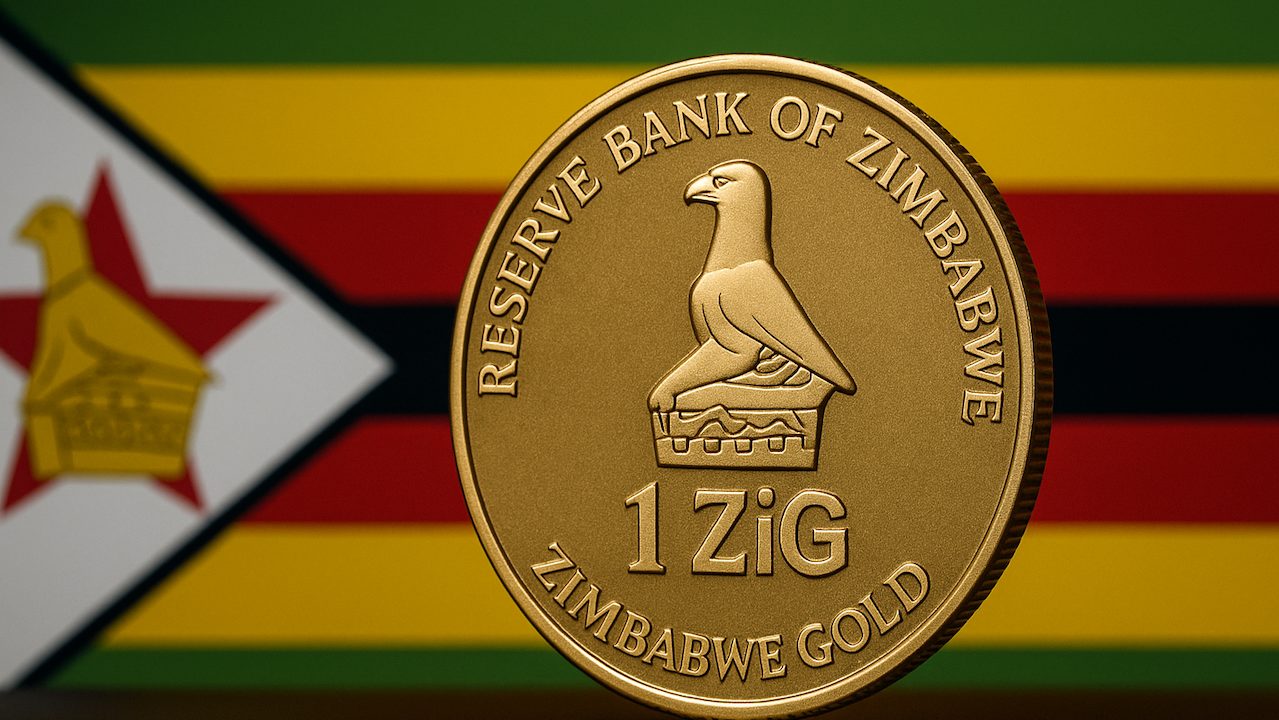(Mike Maharrey, Money Metals News Service) The International Monetary Fund (IMF) supports the Zimbabwe gold-backed ZiG “fully becoming a national currency.”
Currently, the U.S. dollar serves as the country’s primary currency, with about 80 percent of the country’s transactions using greenbacks.
Also known as Zimbabwe Gold, the ZiG is a structured currency backed primarily by 2.5 tons of gold, along with other foreign exchange reserves, including $100 million USD.
The government introduced the gold-backed currency in an effort to stabilize the country’s financial system in April 2024.
As the Zimbabwe African National Union-Patriotic Front (Zanu PF) explained when the currency was introduced, “Given that ZiG is a structured currency deriving its value from gold (a valuable asset), it is likely to maintain a stable value, ceteris paribus. The value of ZiG against USD, therefore, appreciates or depreciates as gold price increases or decreases at the international market. Given the stability of gold price, the ZiG is more likely going to be stable in value currency.”
But that stability ultimately depends on the public’s confidence, and even with the gold backing, Zimbabweans have been slow to adopt the currency because of a deep-seated distrust of the government’s monetary mechanizations.
The skepticism is warranted.
The ZiG was the sixth government attempt to shore up the Zimbabwean currency since 2009.
The Zimbabwe government introduced the ZiG at a rate of 13.56 per dollar. On Sept. 26, the currency was quoted at 14 ZiG per dollar. The next day, the valuation jumped to 24.4 ZiG per dollar, a 43 percent devaluation.
The government took this step, hoping to align the official exchange rate with the unofficial rate on the streets.
This is one of several measures that IMF mission chief Wojciech Maliszewski said need to be in place to boost ZiG adoption by the public.
“Right now, we see good stability in the official market and we also see a convergence between the parallel and official rate. Ideally, we would like to see an elimination of this gap, we would like to see one exchange rate.”
Last year, Zimbabwean President Emmerson Mnangagwa indicated that the government plans to phase out the multicurrency system, with the ZiG becoming the country’s sole legal tender by 2030.
Maliszewski said the IMF does not support additional government devaluations. He thinks the official and unofficial rates will naturally converge if the currency is supported by government fiscal discipline.
That’s a big if.
The country has a long history of rampant inflation. The Zimbabwean dollar (RTGS) lost about 800 percent of its value against the dollar in 2023 alone.
Hyperinflation totally wiped out the value of the Zimbabwe dollar in the early 2000s. In 2009, the government abandoned its currency and adopted foreign currencies – primarily the U.S. dollar (or, more accurately, the Federal Reserve Note).
The African nation reintroduced the Zimbabwe dollar, also known as the bond note, in 2016. It was to be backed by the U.S. dollar loan facility. Then-central bank governor John Mangudya swore the new Zimbabwe dollar would remain on par with the greenback. But the bond note crashed when the government once again began printing excess money. By mid-July 2019, price inflation had increased to 175 percent.
The ZiG was supposed to slam the door on the country’s monetary malfeasance. Backing currency with a hard asset theoretically limits money creation. The government shouldn’t create more notes unless it gets more gold. A gold standard puts a natural brake on monetary expansion.
But merely pegging a currency won’t do the trick if the government can’t resist the temptation to arbitrarily change the peg. A gold standard only works when government officials leave it alone. And as Americans learned in the 1930s, governments can and will quickly unravel a gold standard when it suits their purposes.
Just a few months later, the Zimbabwean government was already pushing miners to produce more gold. This would allow the government to expand the money supply.
“This new currency is anchored on gold production; we have to determine ways to increase production,” Mines and Mining Development Minister Winston Chitando said in a meeting with miners last year.
Since late 2022, Zimbabwe miners have been required to pay a portion of their royalties to the state in gold. An increase in mine production will increase the country’s gold supply. This would theoretically allow the government to increase the amount of ZiG in circulation while maintaining the current ratio of gold backing.
Simply put, an increase in the gold supply amounts to inflation.
The key to ZiG adoption might be public acceptance, but that’s not the biggest challenge. The hard part is changing the mentality of politicians and bureaucrats who rely on the expansion of the money supply to support spending and grow government. A gold standard only works as long as government officials leave it alone.
Mike Maharrey is a journalist and market analyst for Money Metals with over a decade of experience in precious metals. He holds a BS in accounting from the University of Kentucky and a BA in journalism from the University of South Florida.

